Bt Dan Weisz
I went for a walk in Pima Wash hoping to see something interesting. After parking my car and fiddling around for a bit, I stepped out of the car and looking up, spotted this right next to my car!!!
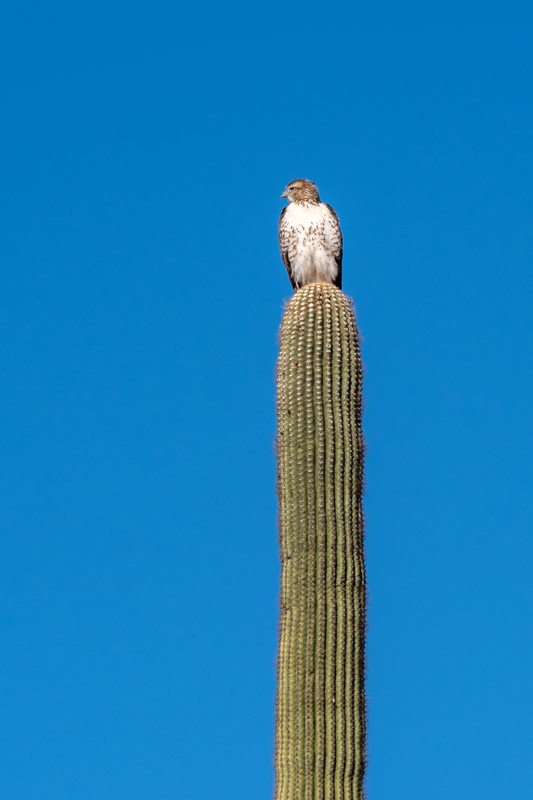
It is a nice looking Red-tailed Hawk. The yellow eye tells us this is a young one. It could be a first year bird but in some redtails it takes more than one year for the iris to change colors to an adult’s brown. In any case, a handsome bird right next to me. You can easily see the “belly band” that the hawk has, another good indicator for Red-tailed Hawk. I hoped I would be able to see the hawk fly off so I waited around.
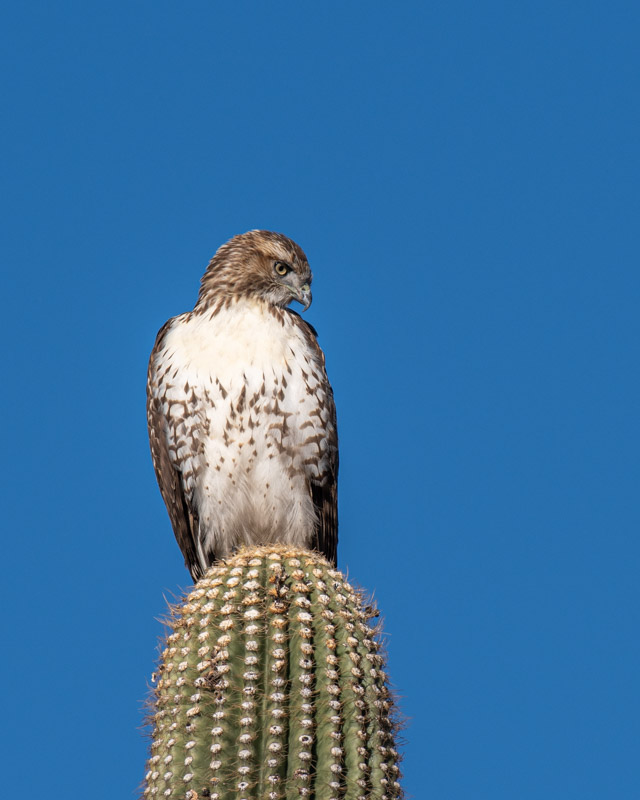
One study showed that Red-tailed Hawks may spend 95% of their time perched, so there was a chance I would have to wait a very long time for this bird to leave. Fortunately, after about ten minutes I saw the hawk poop (to lighten its load) and then rouse. Rousing means the bird shakes all of its feathers out, a good way to both relax and get its feathers all in place to be ready for flight. I waited a bit more and then was rewarded.
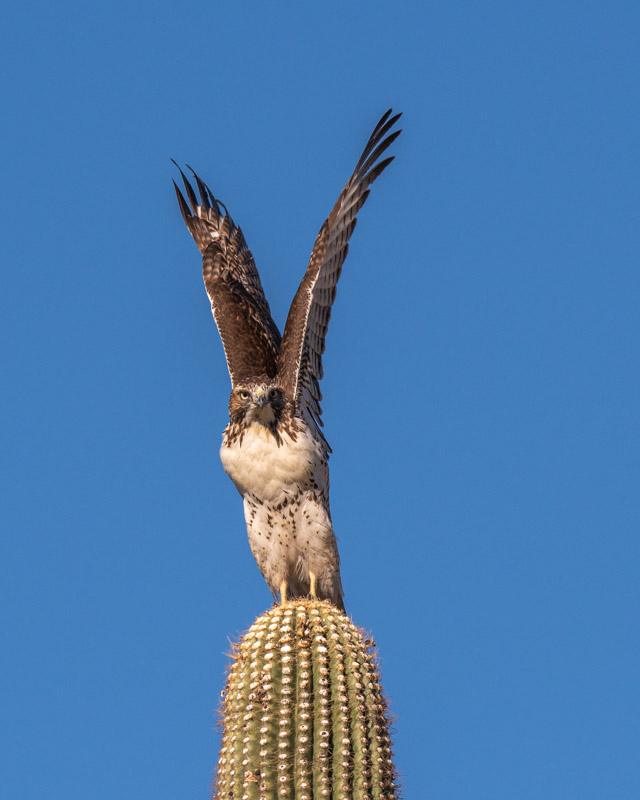
It lifted its wings high up and then while it powered its wings down it pushed off with its feet and became airborne!!
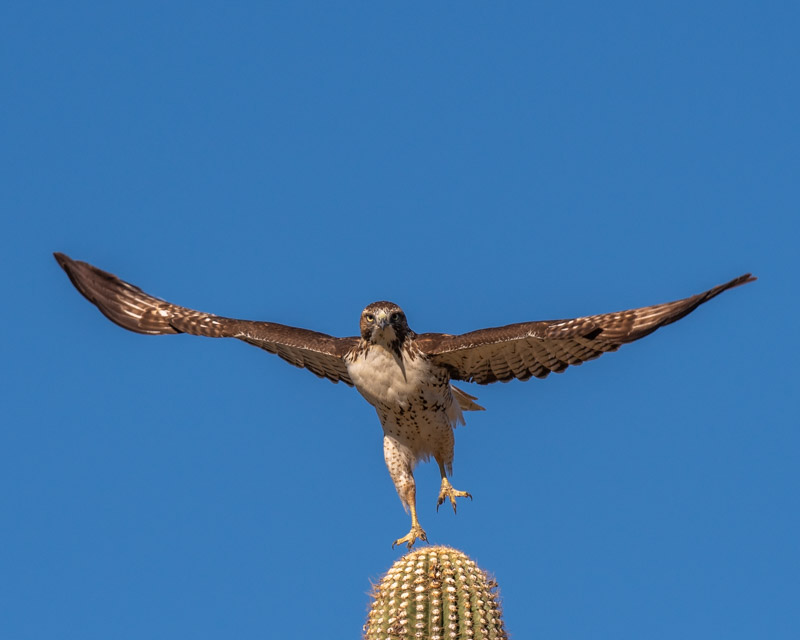
This series of photos, beginning with the wing lift, takes less than two seconds. As you follow the series you can see the sequence of wing movements as the Redtail gets up to speed and flies past me.
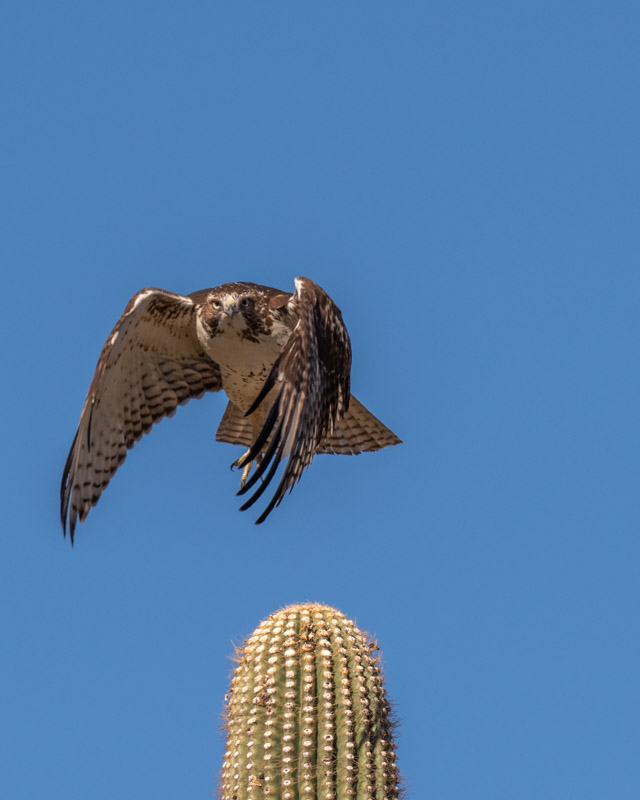
and then up again with feet still dangling.
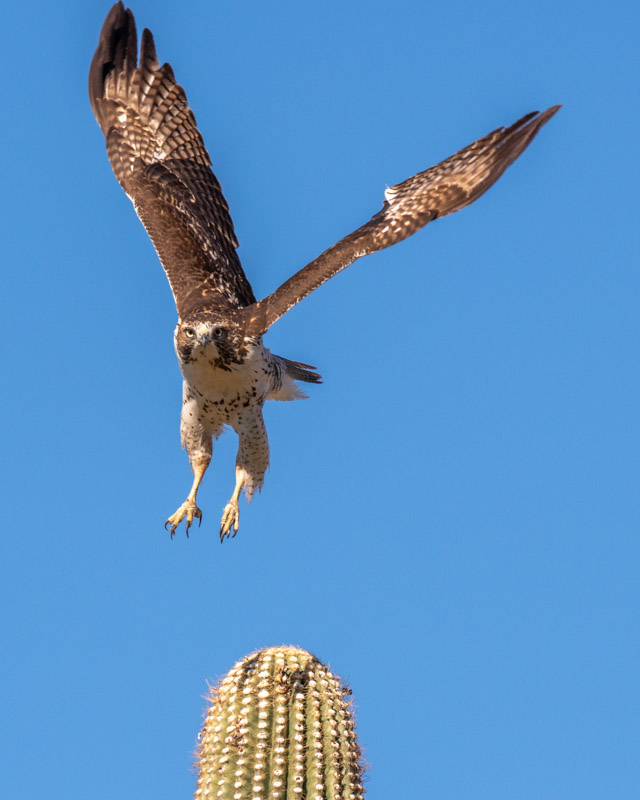
and down. Notice that its tail feathers are spread now- they were not in the instance just before this. Also notice that the tail feathers are not the rusty red of a “Red-tailed” Hawk. The barred tail is another indicator this is a young bird. The hawk’s shadow begins to cross over the saguaro.
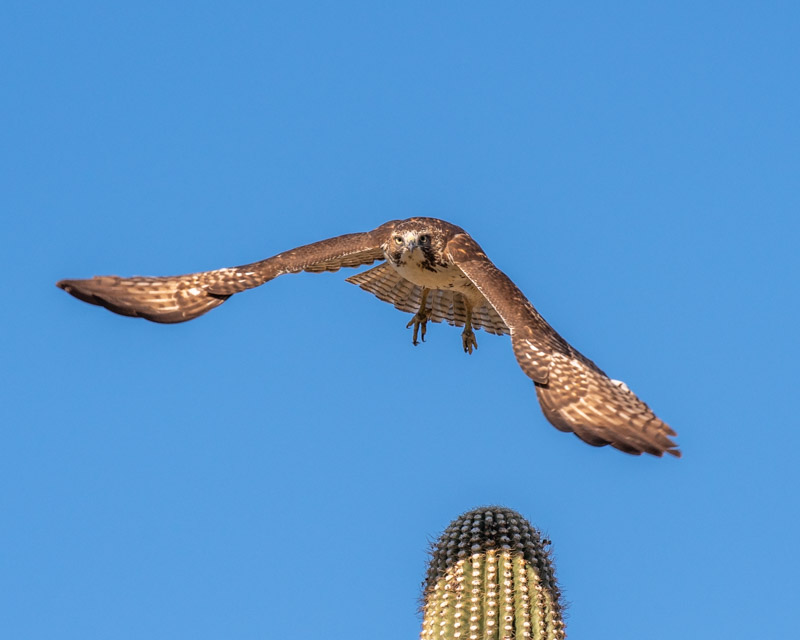
and then back up again, feet still dangling. I can feel the bird’s strength in this shot. The tail feathers are back together again.
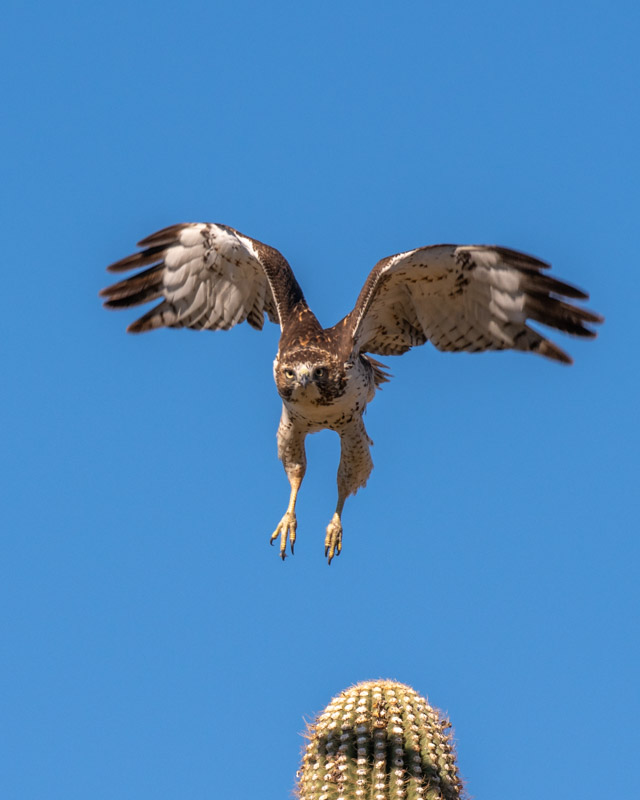
and a push down again with tail feathers spread.
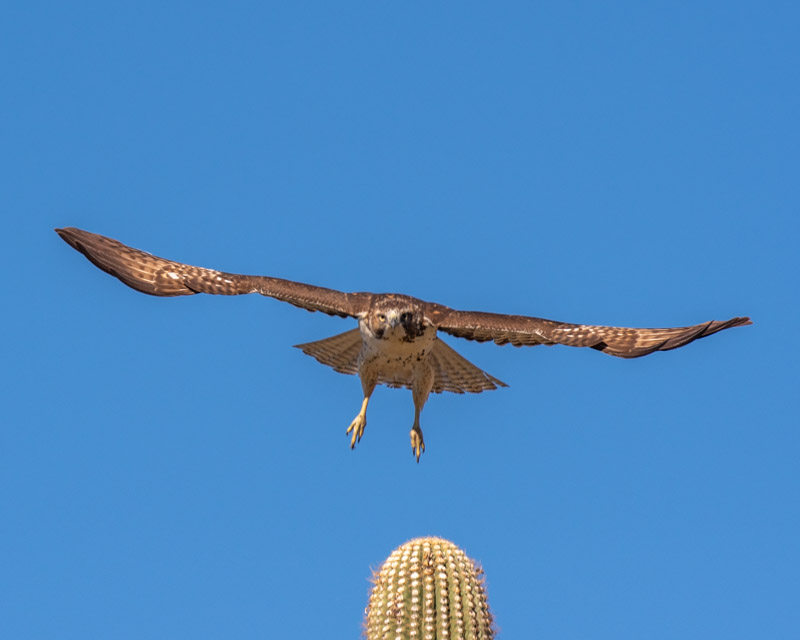
The wing feathers are flexed down completely and the hawk is looking past me but right over my head.
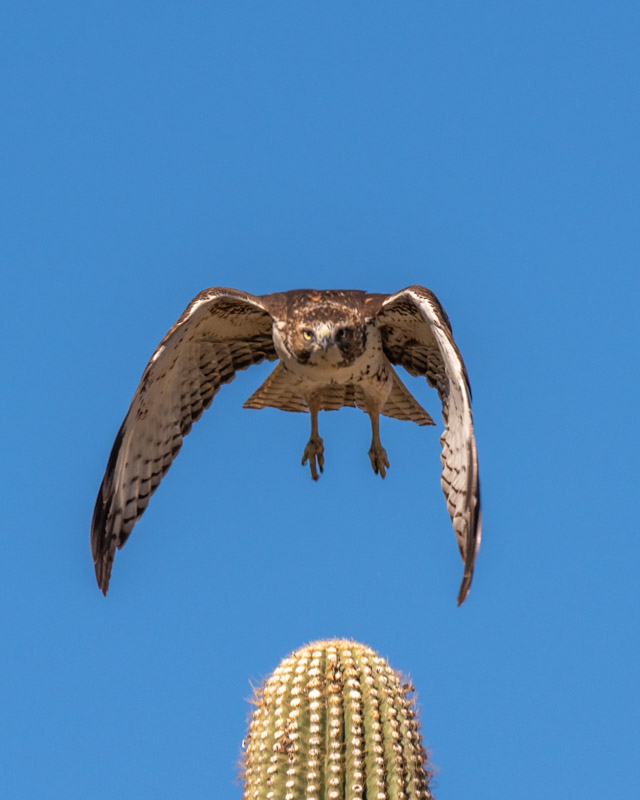
The hawk looks to the side and begins flapping more slowly, almost beginning to glide a bit.
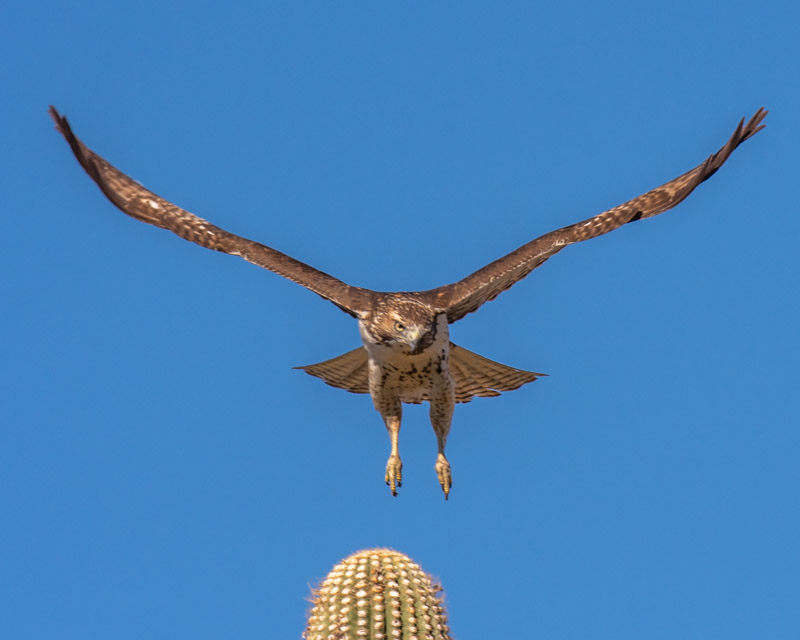
Here, the hawk begins lifting its feet up to tuck under its belly. The shot below is not very sharp but I wanted to include it so you can see the full sequence of flight.
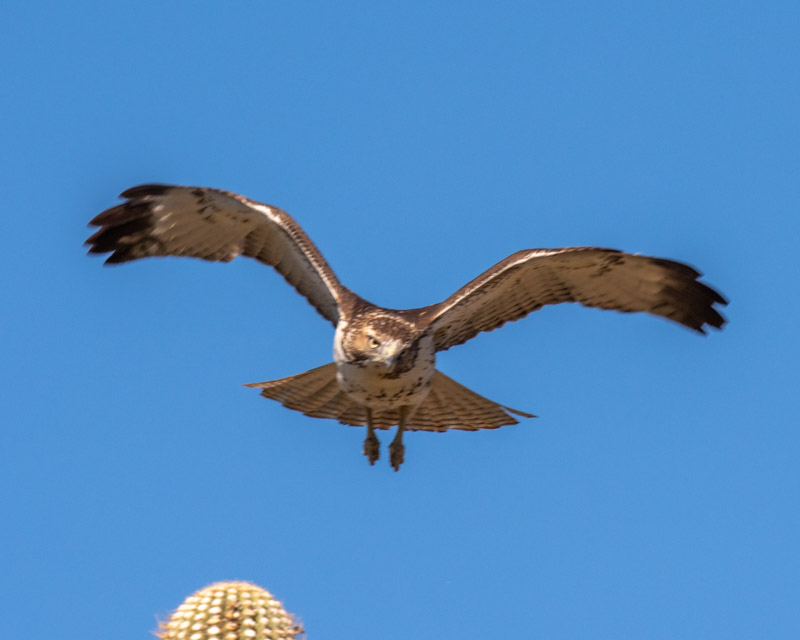
The feet are fully tucked in and the hawk continues to glide forward.
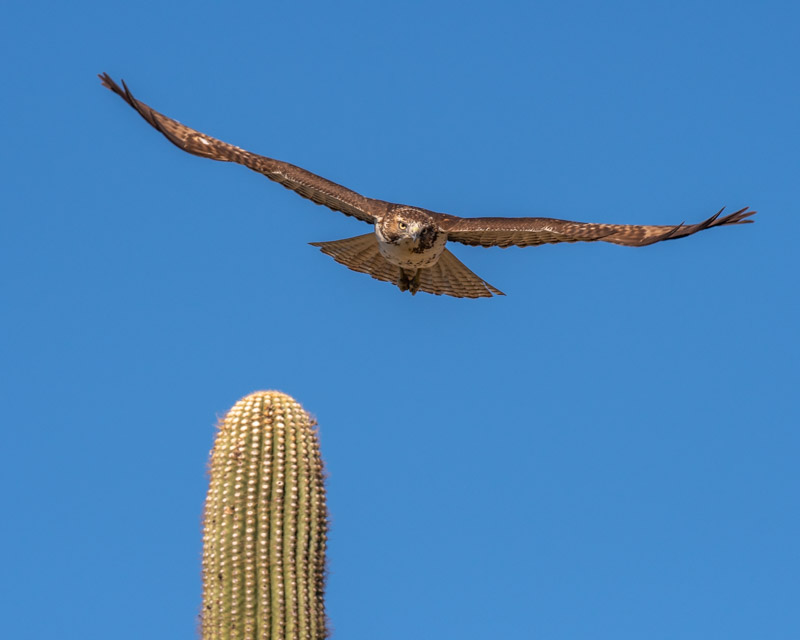
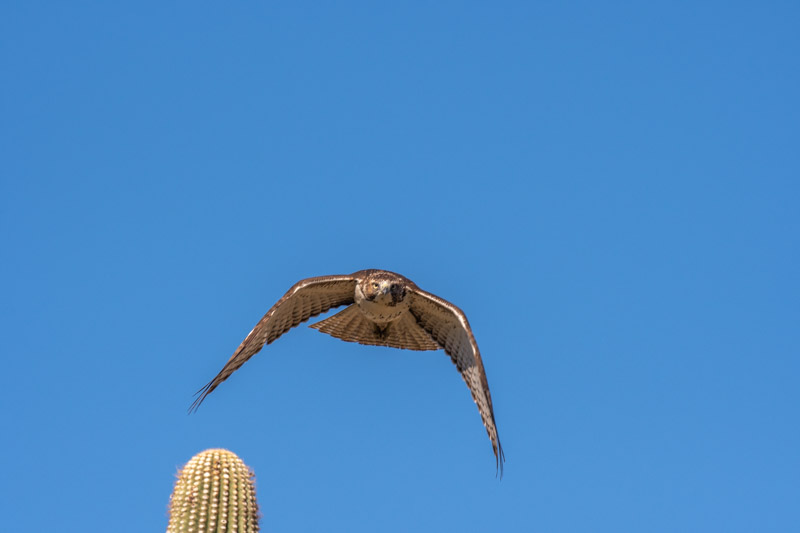
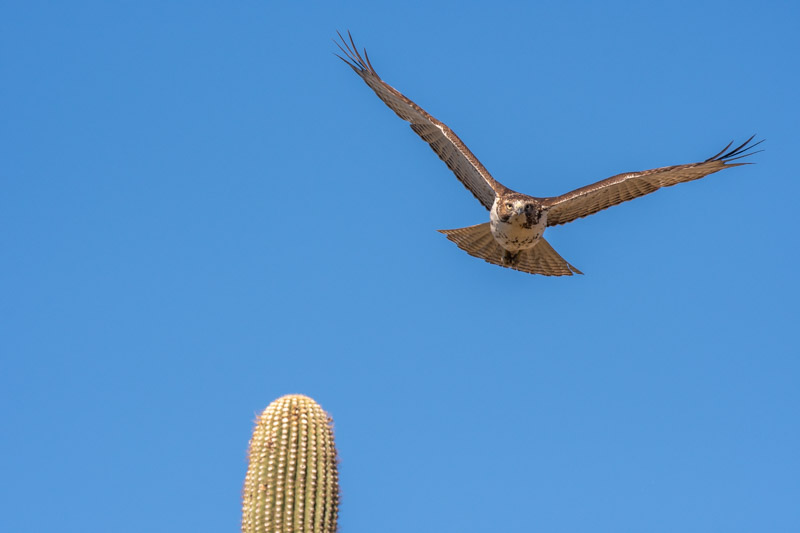
And then it crossed over my head and continued over the wash beyond where I could see it. Our Foothills desert often grants us special surprises!
